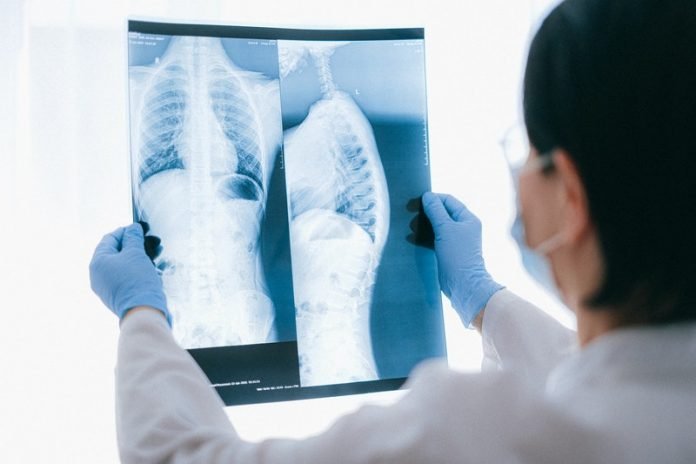
In a new study, researchers found used hyperpolarized xenon gas with MRI scanning to identify the impact on lung function as patients recover from COVID-19, when standard MR and CT scans may be normal.
The research was conducted by a team at the University of Sheffield and the University of Oxford.
In some people, the symptoms of COVID-19 can continue for many months after the infection, which may negatively affect their quality of life, for example, many people complain of persistent breathlessness and fatigue.
In the study, the team examined possible reasons for patients remaining short of breath following treatment for COVID-19 pneumonia, even after they have been discharged from the hospital.
The hyperpolarized xenon MRI technique has identified weakened lung function in all patients who have taken part in the study—this damage to lungs from COVID-19 is not visible on a standard MRI or CT scan.
The team says hyper-polarized xenon MRI offers a unique means of imaging impairment to oxygen uptake in the lungs caused by COVID-19 infection and its after-effects.
In other fibrotic lung diseases, scientists have shown the methods to be very sensitive to this impairment and we hope the work can help understand COVID-19 lung disease.
Hyper-polarized xenon MRI is unique in its ability to measure gas transfer in the lungs with imaging and identify where the damage caused by COVID-19 pneumonia has occurred.
Early data suggests that the ability to transfer oxygen from the lungs into the bloodstream when breathing is visibly impaired for some time, even after hospital discharge following COVID-19 pneumonia.
This reduction in the function of the lungs detected in the study may be an explanation for some patients experiencing persistent symptoms even with seemingly ‘normal’ results from standard GP and hospital tests.
The striking early results have resulted in discussions to expand the study to involve more patients in the community, to identify the overall prevalence of lung damage and the speed of recovery from this virus.
The collaborative team is now working with clinicians providing follow-up services for patients post COVID-19 pneumonia to identify those feeling long-term ill health after COVID-19 who may wish to join the study.
One researcher of the study is Jim Wild, professor of magnetic resonance physics.
Copyright © 2020 Knowridge Science Report. All rights reserved.



